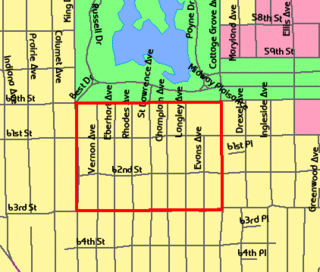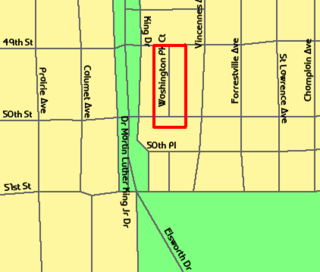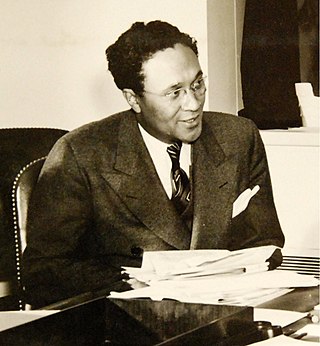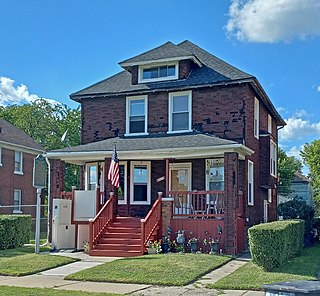A homeowner association, or a homeowner community, is a private association-like entity in the United States, Canada, the Philippines and certain other countries often formed either ipso jure in a building with multiple owner-occupancies, or by a real estate developer for the purpose of marketing, managing, and selling homes and lots in a residential subdivision. The developer will typically transfer control of the association to the homeowners after selling a predetermined number of lots.

Jesse Clyde "J. C." Nichols was an American developer of commercial and residential real estate in Kansas City, Missouri. Born in Olathe, Kansas, and a student at the University of Kansas and Harvard University, his most notable developments are the Country Club District and Country Club Plaza in Kansas City, which influenced suburban developments in other parts of the United States. He served leadership roles in local and national real estate organizations. Through these organizations, his ideas about real estate and planning helped to shape methods for racist and anti-Semitic restrictive covenants and zoning. His legacy has come under increasing scrutiny for these covenants, which prohibited Blacks, Jews, and other minorities from living in these neighborhoods.
Blockbusting is a business practice in the United States in which real estate agents and building developers convinced residents in a particular area to sell their property at below-market prices. This was achieved by fearmongering the homeowners, telling them that racial minorities would soon be moving into their neighborhoods. The blockbusters would then sell those same houses at inflated prices to black families seeking upward mobility. Blockbusting became prominent after post-World War II bans on explicitly segregationist real estate practices. By the 1980s it had mostly disappeared in the United States after changes to the law and real estate market.
A covenant, in its most general sense and historical sense, is a solemn promise to engage in or refrain from a specified action. Under historical English common law, a covenant was distinguished from an ordinary contract by the presence of a seal. Because the presence of a seal indicated an unusual solemnity in the promises made in a covenant, the common law would enforce a covenant even in the absence of consideration. In United States contract law, an implied covenant of good faith is presumed.

California Proposition 14 was a November 1964 initiative ballot measure that amended the California state constitution to nullify the 1963 Rumford Fair Housing Act, thereby allowing property sellers, landlords and their agents to openly discriminate on ethnic grounds when selling or letting accommodations, as they had been permitted to before 1963. The proposition became law after receiving support from 65% of voters. In 1966, the California Supreme Court in a 5–2 split decision declared Proposition 14 unconstitutional under the equal protection clause of the United States Constitution. The U.S. Supreme Court affirmed that decision in 1967 in Reitman v. Mulkey.
An unenforceable contract or transaction is one that is valid but one the court will not enforce. Unenforceable is usually used in contradiction to void and voidable. If the parties perform the agreement, it will be valid, but the court will not compel them if they do not.

The Washington Park Subdivision is the name of the historic 3-city block by 4-city block subdivision in the northwest corner of the Woodlawn community area, on the South Side of Chicago in Illinois that stands in the place of the original Washington Park Race Track. The area evolved as a redevelopment of the land previously occupied by the racetrack. It was originally an exclusively white neighborhood that included residential housing, amusement parks, and beer gardens.

The Washington Park Court District is a Grand Boulevard community area neighborhood on the South Side of Chicago, Illinois. It was designated a Chicago Landmark on October 2, 1991. Despite its name, it is not located within either the Washington Park community area or the Washington Park park, but is one block north of both. The district was named for the Park.

Loren Miller was an American journalist, civil rights activist, attorney, and judge. Miller was appointed to the Los Angeles County Superior Court by governor Edmund G. "Pat" Brown in 1964 and served until his death in 1967. Miller was a specialist in housing discrimination, whose involvement in the early stages of the Civil Rights Movement earned him a reputation as a tenacious fighter for equal housing opportunities for minorities. Miller argued some of the most historic civil rights cases ever heard before the Supreme Court of the United States. He was chief counsel before the court in the 1948 decision that led to the outlawing of racial restrictive covenants, Shelley v. Kraemer.
Carl Augustus Hansberry was an American real estate broker and political activist, and was plaintiff in the 1940 Supreme Court decision Hansberry v. Lee. He was also the father of award-winning playwright Lorraine Hansberry and the great-grandfather of actress Taye Hansberry.

The Shelley House is a historic house at 4600 Labadie Avenue in St. Louis, Missouri. Built in 1906, this duplex was the focus of the 1948 United States Supreme Court case Shelley v. Kraemer, which ruled that judicial enforcement by state courts of racially restrictive covenants violated the Constitution. The house was designated a National Historic Landmark on December 14, 1990.
Shelley v. Kraemer, 334 U.S. 1 (1948), is a landmark United States Supreme Court case that held that racially restrictive housing covenants cannot legally be enforced.

Earl Burrus Dickerson was an American attorney, activist, military officer and businessman who successfully argued before the United States Supreme Court in Hansberry v. Lee.

Tulk v Moxhay is a landmark English land law case which decided that in certain cases a restrictive covenant can "run with the land" in equity. It is the reason that Leicester Square exists today.

A Raisin in the Sun is a play by Lorraine Hansberry that debuted on Broadway in 1959. The title comes from the poem "Harlem" by Langston Hughes. The story tells of a black family's experiences in south Chicago, as they attempt to improve their financial circumstances with an insurance payout following the death of the father, and deals with matters of housing discrimination, racism, and assimilation. The New York Drama Critics' Circle named it the best play of 1959, and in recent years publications such as The Independent and Time Out have listed it among the best plays ever written.
Corrigan v. Buckley, 271 U.S. 323 (1926), was a US Supreme Court case in 1926 that ruled that the racially-restrictive covenant of multiple residents on S Street NW, between 18th Street and New Hampshire Avenue, in Washington, DC, was a legally-binding document that made the selling of a house to a black family a void contract. This ruling set the precedent upholding racially restrictive covenants in Washington; soon after this ruling, racially restrictive covenants flourished around the nation. Subsequently, in Shelley v. Kraemer (1948) the court reconsidered such covenants and found that racially restrictive covenants are unenforceable.
Hurd v. Hodge, 334 U.S. 24 (1948), was a companion case to Shelley v. Kraemer, in which the Court held that the Fourteenth Amendment prohibits a federal court from enforcing restrictive covenants that would prohibit a person from owning or occupying property based on race or color. Hurd v. Hodge also involved racially restrictive covenants on houses in the Bloomingdale neighborhood of Washington, D.C.

Ghettos in the United States are typically urban neighborhoods perceived as being high in crime and poverty. The origins of these areas are specific to the United States and its laws, which created ghettos through both legislation and private efforts to segregate America for political, economic, social, and ideological reasons: de jure and de facto segregation. De facto segregation continues today in ways such as residential segregation and school segregation because of contemporary behavior and the historical legacy of de jure segregation.

The Orsel and Minnie McGhee House is a single family home located at 4626 Seebaldt Street in Detroit. The house played a role in the landmark Shelley v. Kraemer Supreme Court decision that determined racially restrictive covenants to be unenforceable. It was listed on the National Register of Historic Places in 2022.










